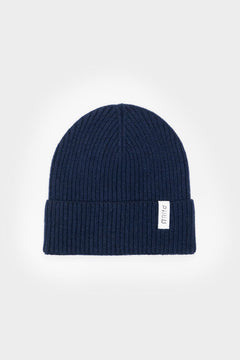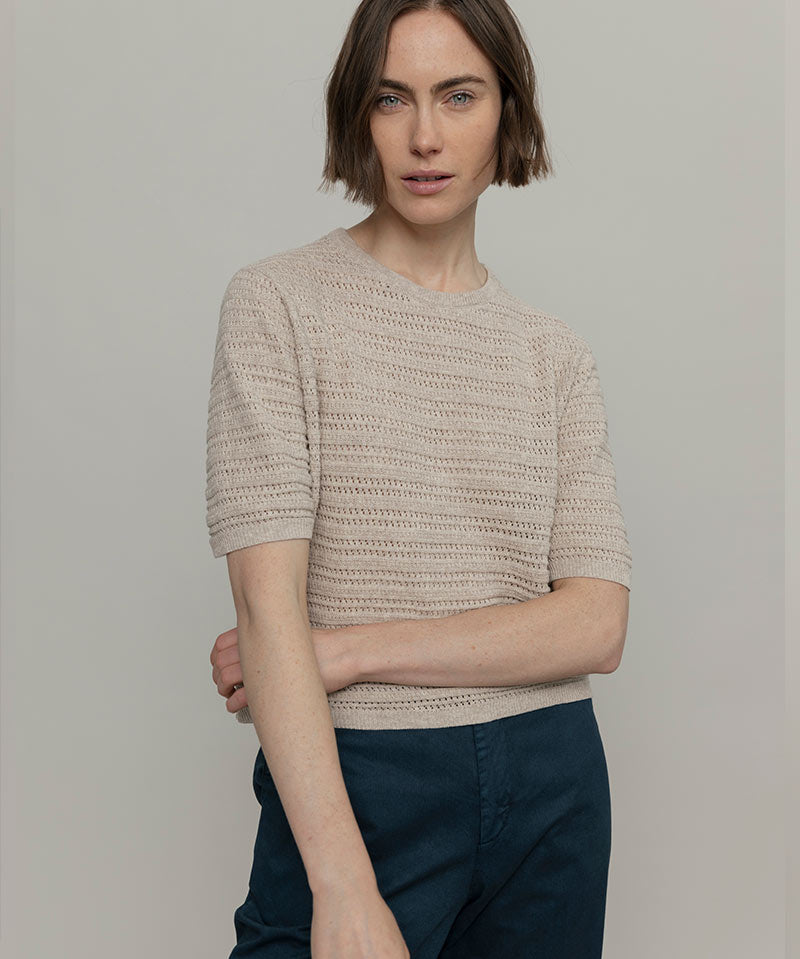Sustainable leather is a tricky subject. In this world, there are no optimal solutions, but only compromises.
The main choice to be made is this: cruelty-free leather or plastic-free leather?
While working on the project of a bag that would adhere to Rifò's principles, which prioritize natural materials and recyclability, we encountered numerous doubts along the way.
Vegan leather? Scrap of animal leather? Mushroom-derived leather? How do we proceed to create a new but responsible and low-impact product?
We wanted our bag to be a structured and durable object, made of a natural and biodegradable material, and above all, we didn't want it to contain plastic materials.
Our research started a remarkable two years ago, and after a lengthy journey, we have successfully brought our vision of a sustainable bag to life. This vision came to fruition through the Cecchi De Rossi X Rifò capsule collection – a Tuscan brand that truly has a wealth of stories to share about craftsmanship and the essence of slow processes.

After forming our own personal opinion about the most sustainable material for a bag, we are eager to share the insights and knowledge we have gathered along the way.
What does sustainable leather mean?
When it comes to sustainable leather, two concepts have emerged as prominent contenders. On the one hand, we have ethically produced animal leather. On the other hand, there is vegetable-based leather, known as bio-based leather, which often contains polyurethane, PVC or microfiber components.

Unfortunately, the market does not offer many options when it comes to leather alternatives without plastic. Therefore, we must define for ourselves what sustainable leather truly means. Afterall, that will depend on the principles and values that matter most to each of us.
Alternatives to leather: some key distinctions
For decades, we thought of eco-leather as something environmentally friendly. We were completely wrong.
In reality, eco-leather is pure artificial leather, usually made from petroleum-based materials such as polyurethane. This material is hardly durable as it often degrades within a few months or sometimes even a year, releasing fragments into the environment.

However, there are other types of synthetic leathers known as plant-based or bio-based leathers that are worth considering. These materials incorporate components derived from organic plant waste, offering greater flexibility and durability compared to eco-leather. The Guardian provided a comprehensive list of these alternatives.
Plant-based leathers have mushroomed in recent years, using apple peels, grape skins, pineapple waste, and other organic plant sources. These cruelty-free alternatives have gained significant popularity in the vegan community.

Nonetheless, as mentioned earlier, these materials typically contain a considerable amount of polyurethane along with other chemically synthesized and petroleum-derived substances. In fact, they often make up more than 50% of the composition, providing the necessary strength and consistency that the plant components alone wouldn't possess.
A 100% plant-based and cruelty-free leather alternative?
On the flip side, we have stumbled upon some exceptions—a few leathers that are 100% plant-based and cruelty-free.
Mushroom-derived leathers
One of the most intriguing alternatives in the industry is leather produced from mushroom mycelium, a material that feels similar to suede and doesn't require the addition of synthetic materials. Currently, we found two such materials available: Muskin and Mylo.
Mushroom-derived leather is an artificial, non-natural product that appears to offer a good compromise between ethics and environmental respect. Nevertheless, the cost of the material and its sourcing pose limitations.
The world of mushroom-based leathers is still not very accessible, as it is difficult to scale and comes with a high cost. This causes a lack of significant demand from brands and keeps the producers limited in their sourcing capacity.
Not surprisingly, one of the most famous products made from this material is the Sylvania bag by luxury brand Hermès.
Mirum
Among the few vegan and plant-based alternatives, we also come across Mirum, a synthetic material that is free from plastic.
The feel of this material is genuinely intriguing, and its appearance is pleasing, but, similar to mushroom derived leathers, the prices are relatively steep compared to those of the finest leathers in circulation.
Upon gathering information for its utilization, we also discovered that the minimum purchase requirements were significantly high, making them unsustainable within Rifò's anti-overproduction philosophy.
To grasp the magnitude of the figures we're dealing with, we found some products made of this material. For example, a passport holder created by Pangaia is priced at over €200 when it hits the market.
Can leather be sustainable too?
Although not compatible with vegetarian and vegan principles, it is important to understand the source of the leather used in the industry and make some distinctions.
In most cases, leather is a byproduct of animal slaughter and isn't sourced directly from dedicated leather farms. It's crucial to understand this distinction as it sheds light on the perception of leather in the fashion industry. In this context, leather is considered a "byproduct" that is created because of the larger livestock industry, which is primarily focused on food production.

Having said this, it is important to understand what kind of leather we are talking about and where it comes from. During our conversation with Tommaso Cecchi De Rossi, the manufacturer of our bags, we discovered that there are numerous husbandry techniques, some of which make an effort to operate in a more sustainable way.
So how can you tell if a leather manufacturer is sustainable? As is so often the case in the fashion industry, it's essential to be cautious of production from countries where sanitary regulations may not be reliable. The lack of these safeguards undoubtedly affects the welfare of the animals being farmed.
It's also necessary to pay attention to how the leather is tanned to achieve the desired end result. It's not uncommon for genuine leather to be treated with synthetics to make the material more "stable"," meaning it doesn't change over time and remains intact. This is another reason why we chose to collaborate with the Cecchi De Rossi brand; their leather is 100% natural and biodegradable. It's treated (and in some cases dyed) with the PelleVino method, patented by Cecchi De Rossi itself and based on wine grape dyes.

In general, sustainable leather aims to find a balance between the environment, animals and the economy, and to ensure an ethical production process. This means that producers of sustainable leather use extensive rather than intensive farming methods. They strive to have as little impact on the environment as possible and to ensure the welfare of the animals throughout their lives. Additionally, their goal is to create a fair and ethical working environment for all.
Are leather scraps environmentally friendly?
For the Cecchi de Rossi X Rifò Capsule Collection bags, we used the leftover material from the Tuscan artisan brand's production. Given that leather is already a byproduct, this material can be considered a byproduct of a byproduct.

It is naturally tanned leather using wine tanning agents. It would have otherwise been thrown away and considered unusable because of its small size. Instead, these small scraps were pieced together to make the details of the models from our recycled denim fabric: Oliveta and Nocciolino.
The main critique a vegan might give is that the production of these scraps still supports a system based on animal suffering.
We partially agree with this point of view. In our search for a material, we considered combining materials, principles, and affordability. The best alternative we found was to breathe new life into a waste product, a resource that has already been produced.

The same criticism could be directed towards the recycling of wool and cashmere and to the circular economy in general, which takes place whenever there is new material to be given new life.
Every recycled item requires a creation that was originally made from scratch.
Is the concept of a bag inherently sustainable?
In conclusion, we firmly believe that the topic of leather goods leads us into a very personal and perhaps even irrational universe.
Each person has their own ideas and needs, which can vary greatly. Materials, shapes, sizes - what takes precedence?
Although useful, a bag is also one of those items of clothing that are heavily influenced by esthetics and often become idealized and coveted objects beyond their objective properties.
How many bags do we have in our closets? How many do we really need in a lifetime?
Have you ever thought about this? We'd love to hear your personal thoughts in the comments. We are very curious to learn more about the ideal sustainable bag!










